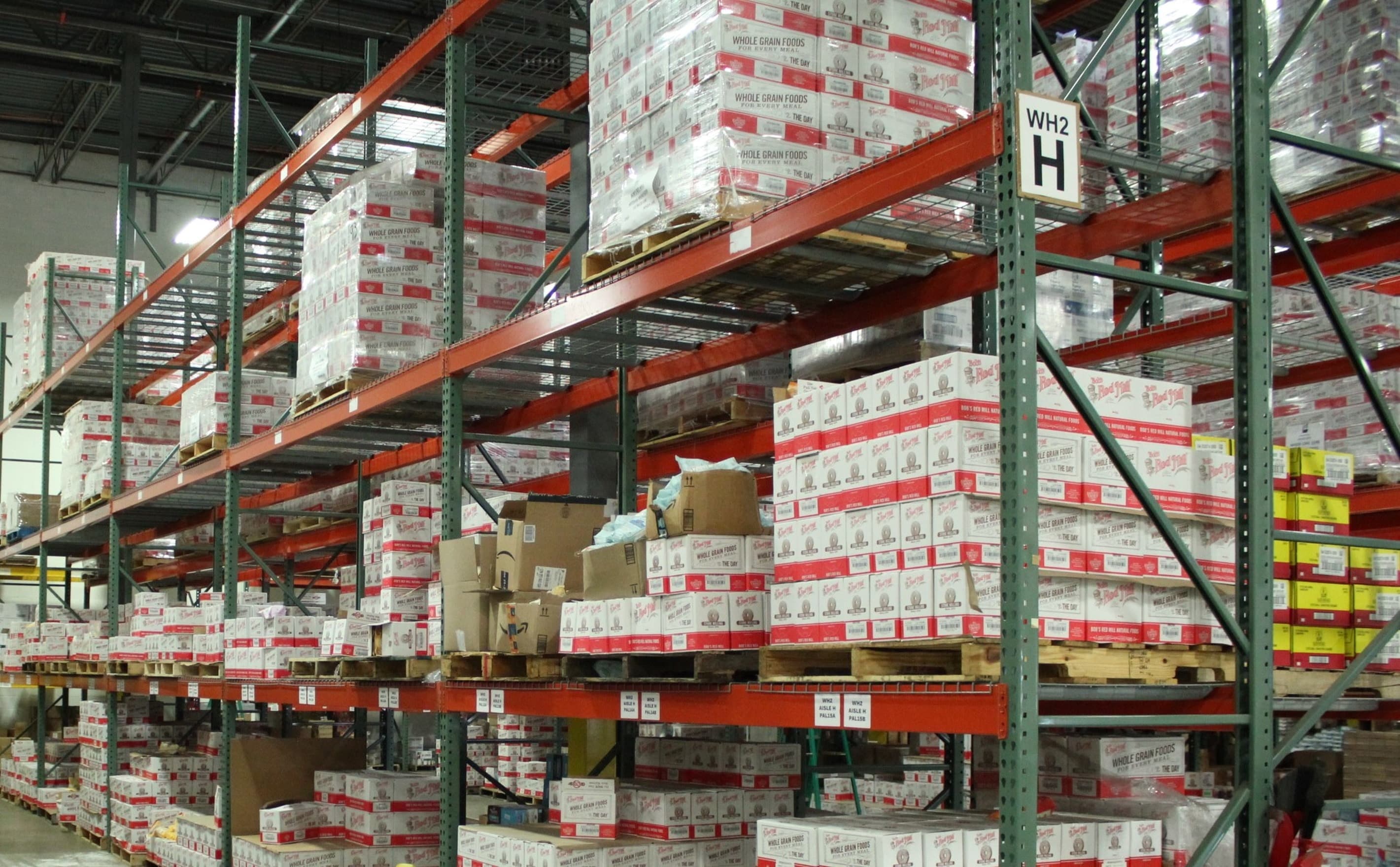
Managing Inventory and Fulfillment for Subscription Boxes: Best Practices
Subscription box businesses have become increasingly popular in recent years, offering consumers a curated selection of products delivered right to their doorsteps. However, managing inventory and fulfillment for subscription boxes can be a complex task that requires careful planning and execution. In this article, we will explore the best practices for effectively managing inventory and fulfillment, ensuring seamless operations and customer satisfaction.
Understanding the Basics of Inventory Management
Accurate inventory tracking is the backbone of . It ensures that you have the right products in stock, minimizes the risk of stockouts or overstock, and provides valuable insights for forecasting and decision-making.
The first step in effective inventory management is to establish a reliable tracking system. Whether you choose to use inventory management software or a manual spreadsheet, the key is to maintain a comprehensive record of your inventory levels, including product names, SKUs, quantities, and locations.
Regularly conducting physical counts and reconciling them with your tracking system is essential to maintain accuracy. This process helps identify any discrepancies and allows you to take corrective measures promptly.
Once you have established a tracking system, it is important to categorize your inventory. This can be done by grouping products based on their characteristics, such as size, color, or type. Categorizing your inventory helps you easily locate and manage specific items, saving you time and effort.
Another crucial aspect of inventory management is setting up reorder points. Reorder points are predetermined inventory levels that trigger the need to replenish stock. By establishing reorder points, you can avoid running out of popular items and ensure a smooth flow of products to meet customer demand.
In addition to setting up reorder points, it is essential to establish safety stock levels. Safety stock is a buffer quantity of inventory that acts as a safeguard against unexpected fluctuations in demand or delays in the supply chain. Having safety stock helps you avoid stockouts and maintain customer satisfaction.
Furthermore, implementing a first-in, first-out (FIFO) inventory management method can help prevent product obsolescence. FIFO ensures that the oldest inventory is sold or used first, reducing the risk of holding onto outdated or expired products. This method also helps maintain product quality and reduces waste.
Effective inventory management also involves analyzing data and utilizing key performance indicators (KPIs). By tracking metrics such as inventory turnover rate, order fill rate, and carrying cost, you can gain insights into the efficiency and profitability of your inventory management practices. These KPIs can guide you in making data-driven decisions to optimize your inventory levels and improve overall business performance.
Lastly, continuous improvement is crucial in inventory management. Regularly reviewing and refining your inventory management processes allows you to adapt to changing market conditions, customer preferences, and industry trends. By staying proactive and embracing new technologies or strategies, you can stay ahead of the competition and ensure the long-term success of your subscription box business.
Implementing Effective Fulfillment Strategies
Once you have a solid inventory management system in place, it's time to focus on efficient fulfillment. The fulfillment process involves picking, packing, and shipping the subscription boxes to customers in a timely manner.
One crucial element of fulfillment is the role of packaging. Choosing the right packaging materials and design can enhance the unboxing experience for your subscribers. Consider including branding elements, personalized touches, and protective materials to ensure that your products arrive in pristine condition.
When it comes to packaging, there are several factors to consider. First and foremost, you need to choose materials that are sturdy enough to protect your products during transit. This may include corrugated cardboard boxes, bubble wrap, or air-filled cushions. Additionally, you can add branding elements to your packaging to create a memorable unboxing experience. This can include custom-printed boxes, tissue paper with your logo, or even handwritten thank-you notes. These personalized touches can make your subscribers feel valued and appreciated.
Another important aspect of fulfillment is the order picking and packing procedures. To streamline this process, it's essential to organize your products in a logical manner. This can be done by categorizing your inventory based on product type, size, or popularity. By doing so, you can reduce the time spent searching for items and increase overall efficiency.
Implementing efficient picking strategies can also significantly improve your fulfillment process. One popular method is batch picking, where multiple orders are picked at once. This reduces the time spent traveling between different locations in your warehouse. Another strategy is zone picking, where different areas of your warehouse are assigned to specific pickers. This minimizes congestion and allows for faster order fulfillment.
Investing in automation technologies can further optimize your fulfillment operations. Barcode scanners can help speed up the picking process by eliminating manual data entry and reducing errors. Pick-to-light systems, on the other hand, use visual cues to guide pickers to the correct items and quantities. These technologies not only improve efficiency but also enhance accuracy, ensuring that the right products are packed and shipped to customers.
Efficient fulfillment is crucial for . By focusing on packaging, organizing inventory, and implementing efficient picking strategies, you can ensure that your subscription boxes are delivered to customers in a timely manner and in perfect condition. Continuously evaluate and improve your fulfillment process to stay ahead of the competition and provide an exceptional experience for your subscribers.
Best Practices in Inventory Management for Subscription Boxes
Balancing inventory levels is crucial to avoid stockouts or overstock situations. Conduct regular demand forecasting exercises based on historical data, customer insights, and market trends to project future demand and plan your inventory accordingly.
One important aspect of demand forecasting is analyzing historical data. By examining past sales patterns, you can identify seasonal trends, peak periods, and any fluctuations in demand. This analysis will help you make informed decisions about inventory levels and ensure that you have enough stock to meet customer demand during busy periods.
Customer insights are also valuable in predicting future demand. By understanding your customers' preferences and purchasing behavior, you can anticipate which products are likely to be popular and adjust your inventory levels accordingly. For example, if you notice a particular item is consistently selling out quickly, you can increase your stock to meet the demand.
Market trends play a significant role in inventory management as well. Keeping an eye on industry trends, competitor activities, and market forecasts can give you valuable insights into potential changes in demand. For instance, if a new trend or product is gaining popularity, you can adjust your inventory to capitalize on the opportunity.
Leveraging technology is another best practice in inventory management. Consider implementing an inventory management software that integrates with your e-commerce platform, providing real-time updates on stock levels and automating reorder processes. This technology can save you time and effort, allowing you to focus on other aspects of your business.
Inventory management software offers various features that can streamline your operations. For example, it can generate reports that provide insights into inventory turnover, stockouts, and excess inventory. These reports can help you identify areas for improvement and make data-driven decisions to optimize your inventory levels.
Real-time updates on stock levels are crucial for subscription box businesses. With an integrated inventory management software, you can monitor your inventory in real-time, ensuring that you are always aware of stock levels and can take immediate action if necessary. This real-time visibility helps prevent stockouts and ensures that you can fulfill customer orders promptly.
Automating reorder processes is another advantage of inventory management software. By setting up reorder points and automatic purchase orders, you can streamline the replenishment process. When stock levels reach a certain threshold, the software can automatically generate purchase orders, saving you time and reducing the risk of running out of stock.
In addition to inventory management software, consider using barcode scanning technology to enhance accuracy and efficiency. Barcode scanners can help you track and manage inventory more effectively, reducing the risk of human error and improving overall inventory accuracy.
Regularly reviewing and optimizing your inventory management practices is essential for subscription box businesses. By implementing these best practices and leveraging technology, you can ensure that your inventory levels are always in sync with customer demand, minimizing stockouts and overstock situations. This proactive approach will help you provide a seamless experience for your subscribers and contribute to the overall success of your business.
Best Practices in Fulfillment for Subscription Boxes
Ensuring timely delivery is essential to keep your customers happy and loyal. Choose reliable shipping partners and negotiate favorable rates to minimize delivery delays and costs. Track shipments using online portals or order management systems to keep both you and your customers informed about the delivery status.
When it comes to fulfillment for subscription boxes, there are several additional best practices to consider. One important aspect is packaging. The way you package your subscription boxes can greatly impact the overall customer experience. Consider using branded packaging materials that reflect your brand's personality and values. This not only adds a professional touch but also creates a sense of excitement and anticipation for your customers when they receive their subscription box.
Another important consideration is personalization. Tailoring the contents of each subscription box to the individual customer's preferences can greatly enhance their satisfaction. Utilize customer data and feedback to curate personalized boxes that cater to their specific interests and needs. This level of customization shows that you value your customers and are dedicated to providing them with a unique and tailored experience.
Handling returns and exchanges is another aspect of fulfillment that requires attention. Implement a straightforward and transparent returns policy, clearly communicating the process to your customers. Streamline your returns handling procedures to minimize response times and offer flexible options, such as exchanges or refunds, to ensure customer satisfaction.
Furthermore, maintaining open lines of communication with your customers throughout the fulfillment process is crucial. Send regular updates and notifications regarding the status of their subscription box, from order confirmation to shipping updates. This not only keeps your customers informed but also reassures them that their subscription is being handled with care and attention.
Additionally, consider including a personalized note or small gift in each subscription box. This thoughtful gesture goes a long way in making your customers feel valued and appreciated. It adds a personal touch to the overall experience and can help foster a stronger connection between your brand and your customers.
Lastly, continuously evaluate and optimize your fulfillment processes. Regularly review customer feedback and analyze data to identify areas for improvement. This could include streamlining your order fulfillment workflow, optimizing inventory management, or exploring new shipping options to enhance efficiency and reduce costs.
By implementing these best practices, you can ensure that your fulfillment process for subscription boxes is not only efficient and reliable but also adds value and enhances the overall customer experience. Happy customers are more likely to continue their subscription and recommend your brand to others, leading to increased customer loyalty and business growth.
Overcoming Common Challenges in Inventory and Fulfillment
Dealing with stockouts and overstock situations is a constant balancing act for subscription box businesses. To prevent stockouts, closely monitor your inventory levels and set up alerts for low-stock products. Maintain productive relationships with your suppliers, ensuring timely reorder or replenishment of popular items.
One effective way to manage stockouts is by implementing a just-in-time inventory system. This approach involves ordering products only when they are needed, reducing the risk of overstocking or running out of stock. By carefully analyzing demand patterns and adjusting your ordering processes accordingly, you can strike the perfect balance between supply and demand.
Managing seasonal demand fluctuations can be challenging but is crucial for business success. Analyze past seasonal patterns and adjust your inventory levels accordingly. Consider offering special promotions or limited-edition boxes to capitalize on the increased demand during peak seasons.
Another strategy to overcome seasonal challenges is by collaborating with your suppliers to ensure a steady supply of products during high-demand periods. By establishing clear communication channels and sharing sales forecasts, you can work together to meet customer demands and avoid stockouts.
Managing inventory and fulfillment is a continuous process that requires attention to detail and adaptability. By understanding the basics of inventory management, implementing effective fulfillment strategies, and following best practices, you can optimize your operations and deliver an exceptional subscription box experience to your customers.
Implementing an inventory management software can greatly streamline your inventory and fulfillment processes. These software solutions provide real-time inventory tracking, automated reorder notifications, and data analytics to help you make informed decisions about your stock levels.
Furthermore, investing in warehouse organization and layout optimization can significantly improve your fulfillment efficiency. By arranging your products strategically, implementing barcode scanning systems, and utilizing automation technologies, you can reduce picking and packing errors and expedite order processing.
Remember, your inventory and fulfillment processes directly impact customer satisfaction and loyalty, so investing time and effort into these areas will undoubtedly pay off in the long run.
Regularly soliciting feedback from your customers can provide valuable insights into their satisfaction levels and help you identify areas for improvement. By actively listening to their suggestions and concerns, you can continuously refine your inventory and fulfillment processes to meet their expectations.
Additionally, staying up-to-date with industry trends and innovations can give you a competitive edge. Explore new technologies such as robotics, artificial intelligence, and predictive analytics that can revolutionize your inventory management and fulfillment operations.
In conclusion, overcoming common challenges in inventory and fulfillment requires a proactive and strategic approach. By implementing the right tools, collaborating with suppliers, and continuously improving your processes, you can ensure smooth operations and deliver exceptional experiences to your customers.
Nitro Logistics Team
Logistics Expert
The Nitro Logistics team brings together decades of experience in logistics, fulfillment, and supply chain optimization.
Stay Updated
Get the latest insights in logistics and fulfillment delivered to your inbox.


